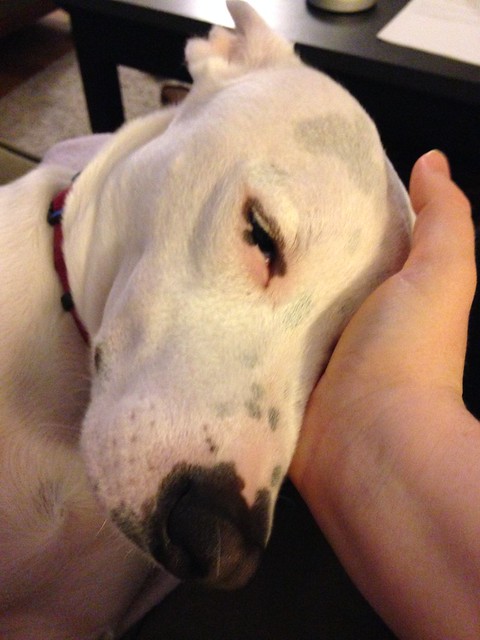We’ve dabbled in several formats of online training classes, and I just realized that my thoughts on those might be helpful to some of you.
Today, registration opens for the December term of the Fenzi Dog Sports Academy.
The Fenzi Academy is a fascinating concept. Denise Fenzi gathered (and continues to gather) a wide variety of experts in various fields who don’t have the fame/resources/ability to reach a large training audience on their own. Under the umbrella of her academy, they can offer their fascinating niche training classes to students outside of their local classes. Every instructor at the Fenzi academy teaches via force-free methods, without the use of verbal or physical corrections, including in some fields where force-free training is difficult to find.
These classes can also be had relatively inexpensively–far cheaper than my very mediocre local training options, although classes here are apparently unusually pricey. The academy operates on a tiered pricing schedule, with price dependent on how much individual interaction you receive from the instructor. Gold spots are the most expensive, and limited to relatively few places per class. In a gold spot, you submit weekly (or more frequent) videos to be critiqued by the instructor. Silver-level students can ask questions in an online forum that is monitored by both the instructor and your classmates. Bronze access is read only, including the ability to see the gold and silver-level forums and videos. After the classes end, you retain access to your online material for a certain amount of time, which renews if you are a recurring student in any Fenzi class. The text portion of the classes is also easy to download or print for future reference. As of this writing, gold access is $260, Silver is $130 (comparable to an in-person class here), and Bronze is $65.
Structurally, the Fenzi Academy classes that I have taken are much like in-person obedience classes. Classes run six weeks, with new classes always starting on the first of the month. The instructor posts a “lecture,” which is usually followed by one or more assignments that you are intended to practice before the next “lecture.” Some instructors use a weekly format, but some post more frequently, or will post several lectures at once. The assignments are almost always accompanied by a video of the instructor demonstrating the exercise with her own dog. I have never felt that the instruction I received was unclear or lacking in any way.
My only dislike with the Fenzi classes is that I don’t find the online format they use to be intrinsically motivating. I came to online training via Susan Garrett, who is a poster child for ADHD. Susan’s Recallers classes move fast, with short activities posted almost every day. I got used to that. (Alternatively, many people, especially those with busy lives, hate the breakneck pace of Recallers, get frustrated, and give up.) It’s easy for me with the Fenzi Academy classes to think “Oh, I’ll read that lecture tomorrow.” Or “well, this class will be in my library if I don’t finish it.” Many students take Gold or Silver level specifically to “make” themselves keep up with the work.
There are many great things about these classes, though. First and foremost, they cover an astonishing array of topics that very, very few of us could find in local classes. Shock-free snake avoidance, agility, heeling, high-level formal obedience, IPO, tricks, conditioning, nose work, you name it. The December-January term has over twenty classes. The instructors are top-notch experts in their fields. Grisha Stewart teaches BAT there now, for instance. The price is unbeatable if you are good at reading and applying on your own.
In general, I’m not sure that online classes can 100% substitute for in-person training. Live classes have the added component of your dog learning to work around other dogs, which is extremely important but difficult for most of us to replicate at home. There are also some mechanical skills for reinforcement-based training that are really best-learned in person. If your dog is a bad fit for in-person classes, though, or it you’re just interested in a kind of class that you can’t find locally, there are some real gems here.
As I mentioned above, December-January enrollment is opening right now. By the time you read this most of the Gold spots will probably be taken, but Bronze-level spots are unlimited and will be accepting students until two weeks after classes start.





